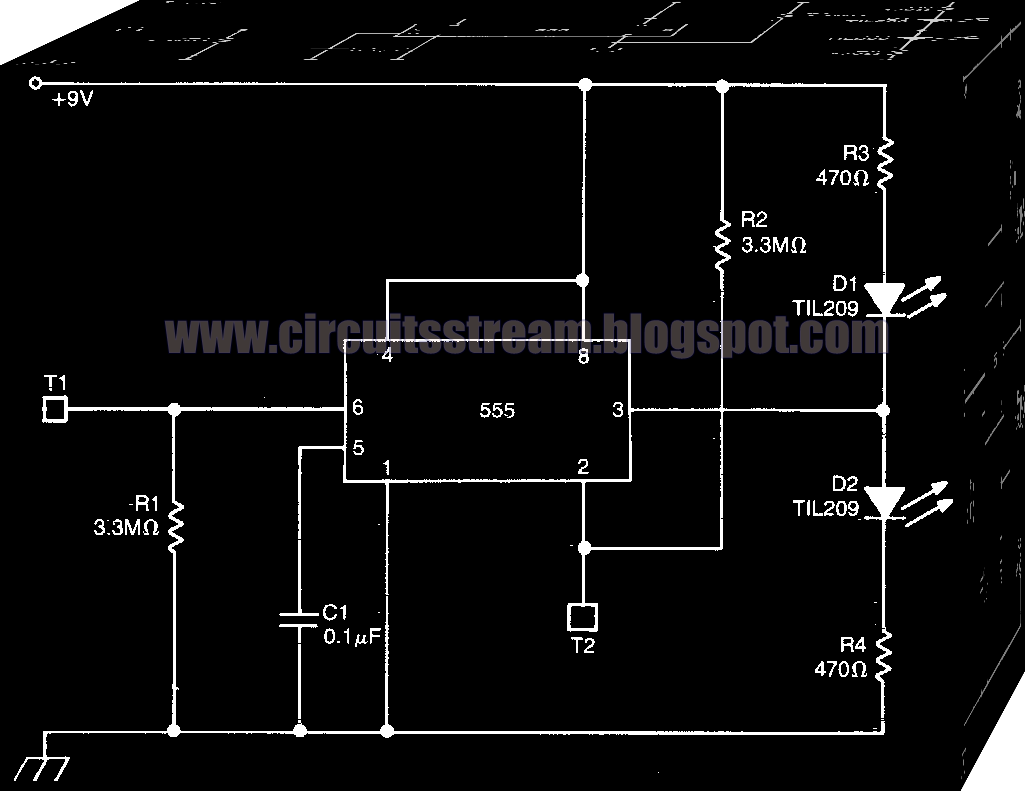This is a simple Electronic Touch Triggered Bistable Circuit Diagram. This circuit uses a 555 timer in the bistable mode. Touching T2 causes the output to go high; D2 conducts and D1 extinguishes. Touching T1 causes the output to go low; D1 conducts and D2 is cut off. The output from pin 3 can also be used to operate other circuits ( a triac controlled lamp). In this case, the LEDs are useful for finding the touch terminals in the dark Cl is not absolutely necessary but helps to prevent triggering from spurious pulses.
Electronic Touch Triggered Bistable Circuit Diagram

Comments
Post a Comment